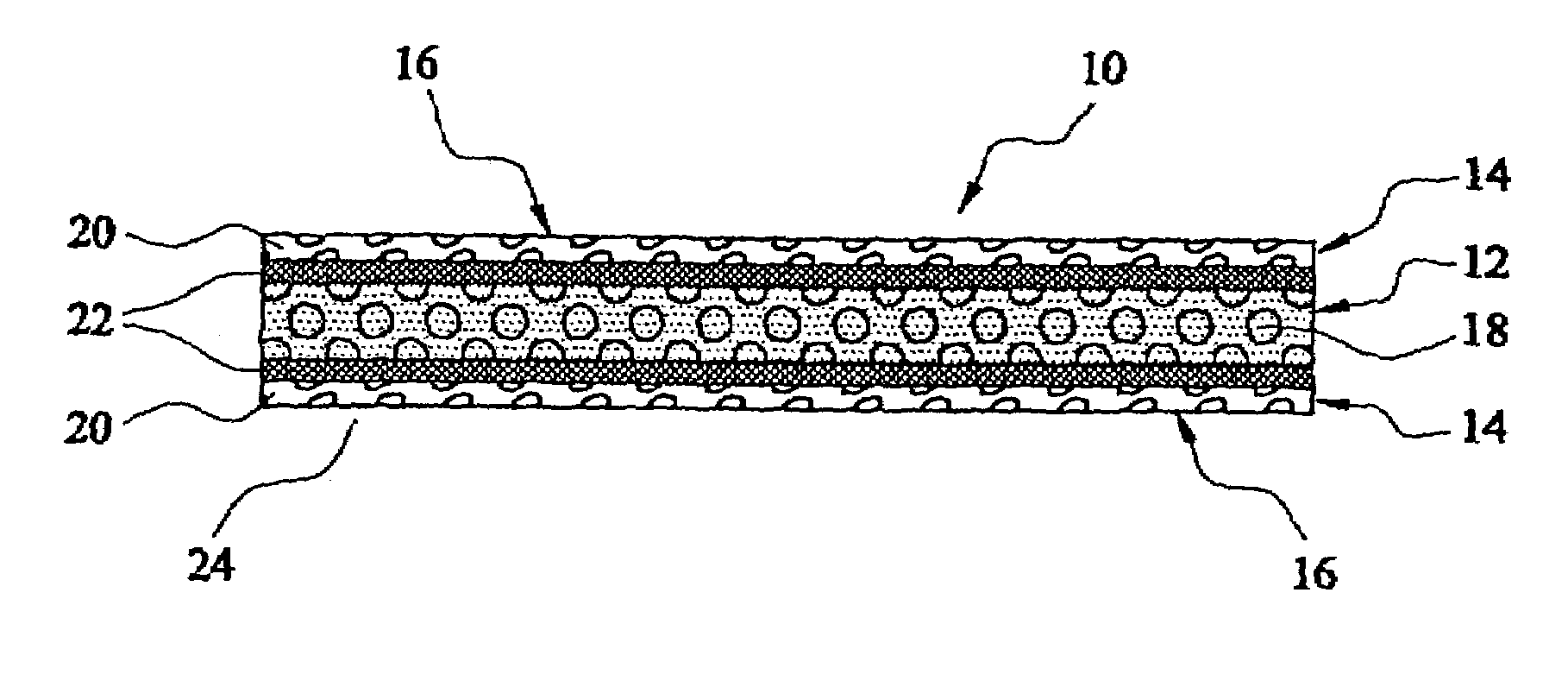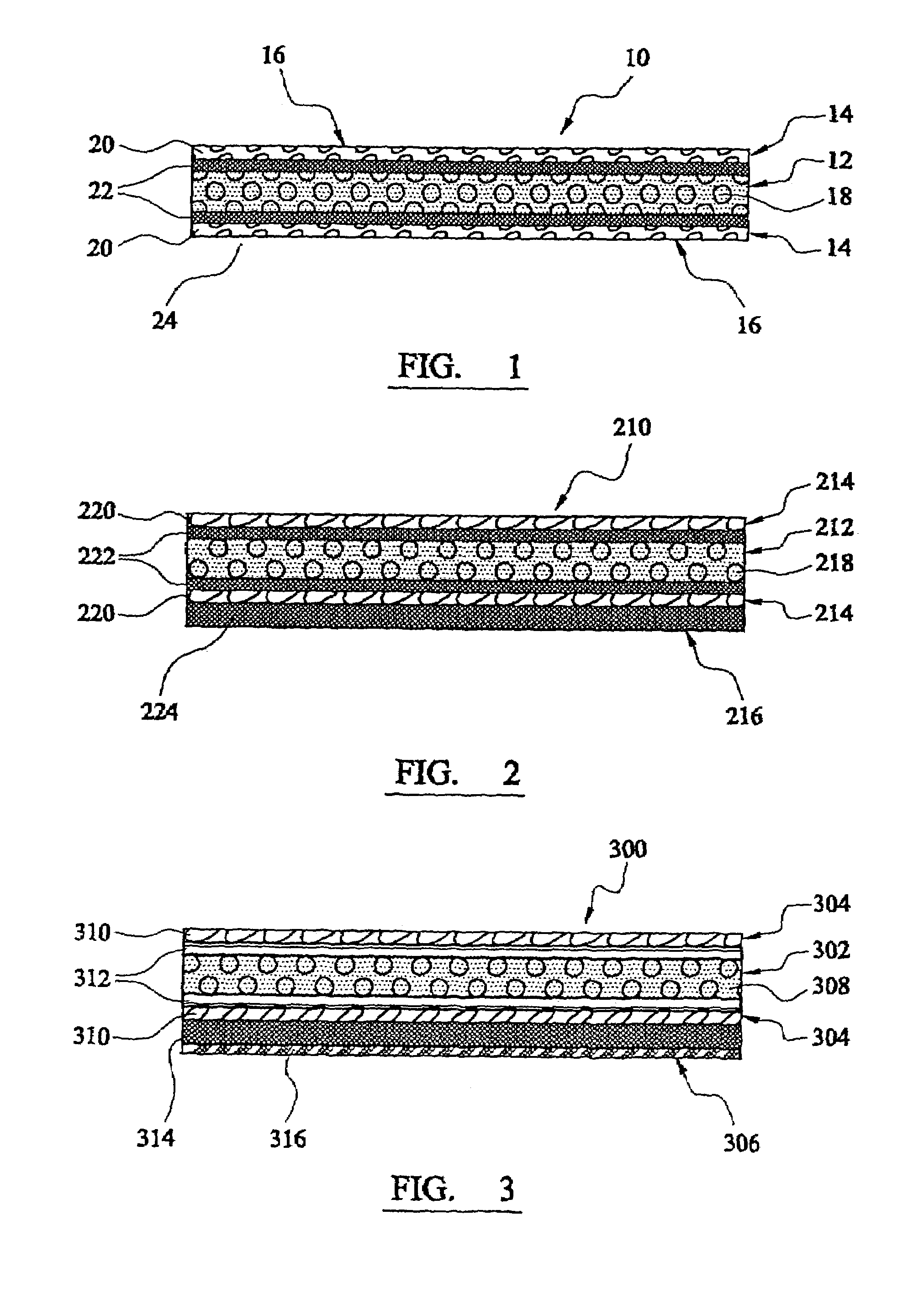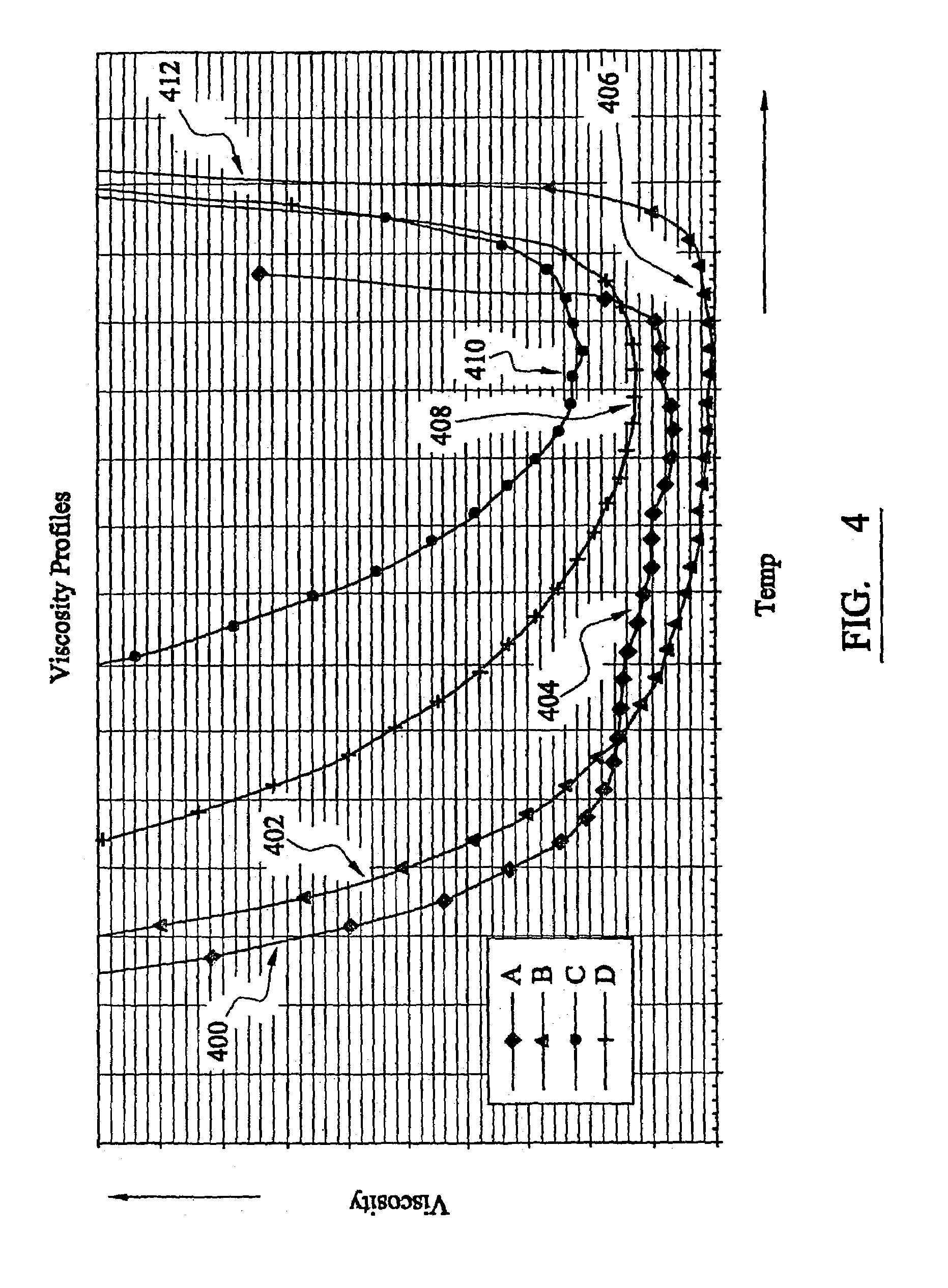Sheet moulding compound (SMC) with ventilating structure for entrapped gases
- Summary
- Abstract
- Description
- Claims
- Application Information
AI Technical Summary
Benefits of technology
Problems solved by technology
Method used
Image
Examples
Embodiment Construction
[0089]The moulding material 10 comprises a core layer 12, reinforcement layers 14 and external surfaces 16. The core layer 12 comprises a core resin and a hollow filler 18. The reinforcement layers 14 are provided on each side of the core layer 12. The reinforcement layers 14 comprise a fibrous reinforcement material 20 and a reinforcement resin 22 which is provided between the core layer 12 and the reinforcement material 20. In an alternative embodiment (not shown) the reinforcement material 20 can be partially preimpregnated by the reinforcement resin 22. The reinforcement layer 14 further comprises a conduit structure which allows gases to pass out of the moulding material 10 via the reinforcement layer 14 during processing. The conduit or ventilating structure is formed by the reinforcement material 20.
[0090]When fabricating or manufacturing an article of the moulding material 10, the moulding material 10 is applied to a mould such that the external surface 16 of one of the rein...
PUM
| Property | Measurement | Unit |
|---|---|---|
| Flow rate | aaaaa | aaaaa |
| Structure | aaaaa | aaaaa |
| Viscosity | aaaaa | aaaaa |
Abstract
Description
Claims
Application Information
 Login to View More
Login to View More - R&D
- Intellectual Property
- Life Sciences
- Materials
- Tech Scout
- Unparalleled Data Quality
- Higher Quality Content
- 60% Fewer Hallucinations
Browse by: Latest US Patents, China's latest patents, Technical Efficacy Thesaurus, Application Domain, Technology Topic, Popular Technical Reports.
© 2025 PatSnap. All rights reserved.Legal|Privacy policy|Modern Slavery Act Transparency Statement|Sitemap|About US| Contact US: help@patsnap.com



